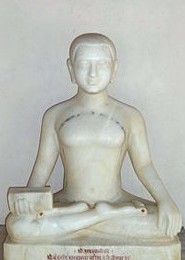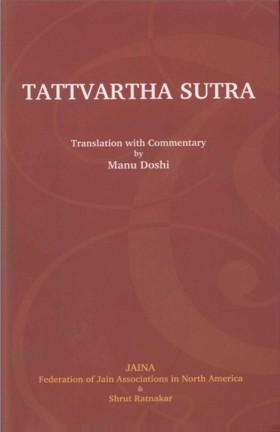02.26 Vigrahgatau Karmayogah
Audio: Sanskrit: विग्रहगतौ कर्मयोग: ।
Hindi: विग्रहगति में कार्मणयोग होता है ।
02.27 Anushreni Gatih
Audio: Sanskrit: अनुश्रेणी गति:।
Hindi: श्रेणी का अनुशरण करती हुई सरल-सीधी रेखा में गति होती है ।
02.28 Avigrahā Jeevasya
Audio: Sanskrit: अविग्रहा जीवस्य ।
Hindi: मुक्त जीव की गति विग्रह (मोड़ या व्याघात) रहित होती है ।
02.29 Vigrahavati Cha Sansārinah Prāk Chaturbhyah
Audio: Sanskrit: विग्रहवती च संसारिण: प्राक् चतुर्भ्य:।
Hindi: संसारी आत्मा की गति अविग्रह और सविग्रह होती है! विग्रह चार से पहले अर्थात तीन तक हो सकते है ।
02.30 Ekasamayo'vigrahah
Audio: Sanskrit: एकसमयोअविग्रह: ।
Hindi: विग्रह का अभाव एक समय परिमित है अर्थात विग्रहाभाववाली गति एक समय परिमाण है ।
02.31 Ekam Dwau Va'nāharakah
Audio: Sanskrit: एकं द्वो वानाहारक:
Hindi: एक, दो समय तक अनाहारक रह सकता है!
02.26-31
English: These sutras deal with the movement of soul during transit from one body to another. That movement takes place in straight direction with or without turns. The straight movement can be in four main directions, four oblique directions, upward and downward. The straight movement in any of these ten directions is termed as Rju Gati and that with turns as Vigrah Gati. Moving in straight direction does not need any effort by the soul. The thrust derived at the time of leaving the earlier body is enough to take it to the new destination. That takes only one Samay, which is an infinitesimal part of a second.
Moving in turns needs additional effort, which is provided by the Kārman body composed of the particles of Karma. That movement takes as many additional Samays as the number of turns. Since there cannot be more than three turns, in no case can the transit require more than four Samays. The souls proceeding for liberation invariably move upward. Others may go straight or make turns depending upon their destinations.
 Acharya Umaswati
Acharya Umaswati
